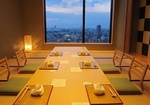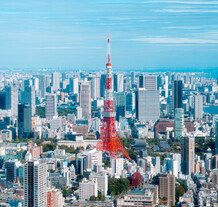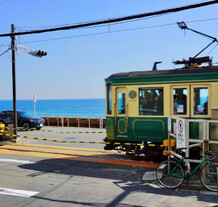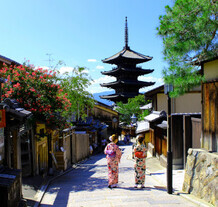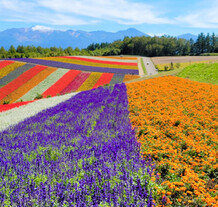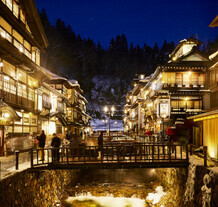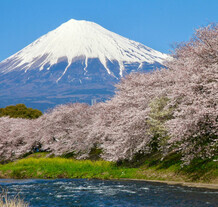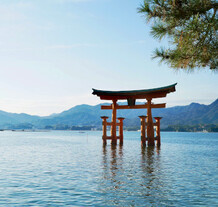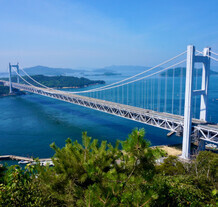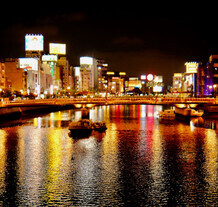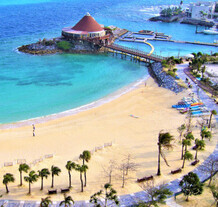"Monjayaki" is a specialty loved by the working-class inhabitants of Tokyo since old times. At first glance, you'll be surprised by its unique appearance, but after a bite, you'll immediately fall in love with its flavor! This is a complete guide to monjayaki that will explain what it is, what it's made of, and how it's cooked! There is also a list of recommended monjayaki restaurants in Tokyo, so make sure to check that out, too!
What Is Monjayaki?
It is said that monjayaki was born in the "shitamachi" areas of Tokyo. The word "shitamachi" refers to an industrial or commercial area—distinct from entertainment or business districts—usually located by the water, with a highly-concentrated population. They are generally known as working-class areas lined with residential buildings. The base of monjayaki consists of a batter made from a mixture of flour, sauce, and dashi (broth). This is topped with cabbage, seafood, or meat, and cooked on a teppan (iron griddle). Most of the appeal of monjayaki lies in the fact that you can use anything as a topping, including cheese, mochi, or even snacks. The combinations are countless and differ from place to place, so trying and comparing different varieties is part of the fun!
Monjayaki vs. Okonomiyaki
Okonomiyaki is a specialty from Osaka or Hiroshima. The ingredients used for monjayaki are almost the same, so many restaurants serve both dishes. Japanese people consider the two dishes to be quite similar, but with one huge difference: the thickness of the batter. Okonomiyaki takes on a thick pancake-like shape and can even be cut into slices. On the contrary, monjayaki is characterized by a nearly liquid batter that needs to be scooped up with a small spatula when eaten. This has to do with the amount of water mixed in with the flour. Compared to okonomiyaki, a lot more water is used to make monjayaki, making it difficult for the batter to firm up.
How to Make Monjayaki
It takes a few special tricks to make monjayaki. Let's start with the setup. Start by heating the griddle and lightly greasing it with oil. Thoroughly mix the dashi and other ingredients in the monjayaki bowl. Once the griddle is hot enough, it's time to cook! Scoop the non-liquid ingredients onto the griddle and cook until the cabbage softens up. If you chop up the ingredients with the small spatula as you cook, it will be easier to eat later! Once everything is cooked nicely, form everything into a donut shape. This is important! If you don't make sure that there are no gaps, the liquid part will leak out, so press everything well together when creating the base. When you're done, pour the liquid batter left in the bowl into the center of the donut.
![A Guide to Monjayaki: From the Recipe and Ingredients to the Most Recommended Restaurants!]()
![A Guide to Monjayaki: From the Recipe and Ingredients to the Most Recommended Restaurants!]()
After you've added all the broth, wait until it starts to boil. When it does, you can break the base and mix everything until you get a sticky texture. Then, spread everything to make a thin layer and it's done! Scrape the batter off of the griddle with your spatula and eat. It's super hot though, so be careful!
Recommended Monjayaki Spots in Tokyo
1. Ganso Ebidashi Monja no Ebisen Shibuya Stream Branch
Ganso Ebidashi Monja no Ebisen is a restaurant specializing in monja-yaki, using their meticulously crafted shrimp broth. The rich broth, simmered for 6 hours with shrimp and vegetables, allows guests to fully savor the deep umami of the shrimp. Their diverse selection of monja and okonomiyaki, featuring original sauce, is quite popular. Particularly recommended is the "Ganso Ebidashi Monja Special," a luxurious monja filled with generous portions of shrimp, mentaiko (spicy cod roe), squid, baby scallops, tobiko (flying fish roe), mochi, and cheese. The substantial ingredients provide a satisfying and visually impactful dish. Customers can enjoy the enticing aroma and flavor of the shrimp broth, making it a guaranteed enjoyable experience for meals with family and friends.
Ganso Ebidashi Monja no Ebisen Shibuya Stream Branch
Open:
[Weekdays] Lunch 11:30 am - 2:30 pm Dinner, 5:00 pm - 11:00 pm / [Saturday, Sunday, National Holidays] 11:30 am - 11:00 pmClosed:
NoneAverage price:
[Dinner] 3,000 JPY / [Lunch] 1,500 JPYAccess:
1-minute walk from JR Shibuya Station. Located on the 2nd floor of Shibuya Stream.Address:
2F, Shibuya Stream, 3-21-3, Shibuya, Shibuya-ku, Tokyo MapMore Details Reservation
2. Monja Mugi (Tsukishima)
Monja Mugi is a long-established restaurant appreciated by many locals. Here you can choose from a large variety of items, from the basic [Monja] (750 JPY) to the [Mugi Special Monja] (1,450 JPY) made with vegetables and mushrooms. All the ingredients are carefully selected: the seafood comes from Tsukiji, while the vegetables and flour used to make the base are all super fresh.
Monja Mugi
Open:
[Tuesday-Sunday/Holidays/Day Before Holidays] Normal hours: 11:30 am - 10:30 pm (L.O. 9:45 pm)Closed:
SundaysAverage price:
[Dinner] 2,000 JPYAccess:
A two minute walk from exit 7 in Tsukishima Station.Address:
1-23-10 Tsukishima , Chuo-ku, Tokyo MapMore Details Reservation 3. Ocomo (Asakusa)
If you want to try slightly unique types of monjayaki, head to Ocomo in Asakusa. The basic [Base Monja + Topping of Your Choice] (680 JPY (excl. tax)) is quite affordable. The most popular dish is their Western-style [Italian Monja (Pescatore Style)] (1,180 JPY (excl. tax)). This original monjayaki combines the flavor of tomato with seafood. Be sure to try this restaurant's unique version, because you won't regret it. There's even a monjayaki all-you-can-eat plan for when you're really hungry!
Ocomo
Open:
[Weekdays] Lunch 11:30 am - 3:00 pm Dinner 5:00 pm - 12:30 am *During lunch on weekdays, only groups reservations are accepted.[Saturday, Sunday, and national holidays] Lunch 11:30 am - 5:00 pm Dinner 5:00 pm - 12:30 am *We are open non-stop 11:30 am - 12:30 amClosed:
NoneAverage price:
[Dinner] 2,000 JPY / [Lunch] 1,000 JPYAccess:
A 1-minute walk from either exit 1 from Asakusa station on the Toei Asakusa line, exit A4 from Asakusa station on the Ginza line or exit A1 from TX Asakusa station.Address:
KN Asakusa Bldg. 2F , 1-10-5 Asakusa , Taito-ku, Tokyo MapMore Details Reservation 4. Oshio Ataru (Tsukishima)
In addition to all sorts of monjayaki dishes, Oshio Ataru serves wine, champagne, and other alcoholic drinks. You'll definitely want to pair your drink with their [Ataru Original Monja Served with Mentaiko, Mochi, and Cheese] (1,250 JPY). "Mentaiko" is walleye pollack roe pickled in salt and seasoned with chili pepper and other condiments. The saltiness of the mentaiko tastes amazing with the mild flavor of the cheese. Mochi is added to accent everything with a pleasant stickiness.
Oshio Ataru
Open:
Normal hours: 12:00 pm - 11:00 pm (L.O. 10:30 pm)Closed:
NoneAccess:
Leave exit 5 of Tsukishima station and turn right at the first corner, the restaurant is down the second left, at the first corner.Address:
1-10-4 Tsukishima , Chuo-ku, Tokyo MapMore Details Reservation 5. Harunami (Iidabashi)
Harunami is a teppanyaki spot where you can savor monjayaki as well as okonomiyaki and steak. Items such as the [Tuna Monja] (800 JPY), [Curry Monja] (850 JPY), and almost all their other monjayaki are priced less than 1,000 JPY. Most of their monjayaki are pretty simple, so why not customize yours with your favorite toppings?
*The photo is of okonomiyaki.
Harunami
Open:
6:00 pm - 12:00 amClosed:
Average price:
[Dinner] 3,000 JPYAccess:
Take the Iidabashi B4b Exit, head up Karukozaka Hill and continue straight to find the restaurant on the rightAddress:
4-3, Tsukudo-cho, Shinjuku-ku, Tokyo MapMore Details
6. Okonomiyaki Monjayaki Asakusa Tsurujiro (Asakusa)
Okonomiyaki Monjayaki Asakusa Tsurujiro offers superb monjayaki in the tourist hotspot of Asakusa. Their [Special Monja] (1,590 JPY) comes highly recommended. This monjayaki is loaded with toppings: pork, squid, octopus, scallop, shrimps, corn, pickled ginger, eggs, and fu (wheat puffs). Both the taste and texture are amazing. Plus, it's made with a chicken and vegetable stock which is cooked for 3 days, creating an extra rich flavor.
Okonomiyaki Monjayaki Asakusa Tsurujiro
Open:
[Weekdays, Saturdays, Days before holidays] Lunch 11:30 am - 3:00 pm (L.O. 2:30 pm) / Dinner 5:00 pm - 10:00 pm (L.O. 9:00 pm)[Sundays, Holidays] Hours 11:30 am - 9:00 pm (L.O. 8:00 pm)Closed:
TuesdaysAverage price:
[Dinner] 2,000 JPY / [Lunch] 980 JPYAccess:
A three minute walk from the number 1 exit of Tokyo Metro Asakusa Station. Head straight toward Asakusa Public Hall, on the right.Address:
1-20-8 Asakusa , Taito-ku, Tokyo MapMore Details
7. Iroha Main Store (Tsukishima)
Iroha Main Store is one of the many monjayaki spots in the Tsukishima area. It's a famed restaurant that has been loved by its many regular customers ever since its opening in 1955. The most popular item on the regular menu is the [Mixed Monja] (1,350 JPY). As you will notice when they bring it to your table, it's incredibly huge. In addition, the monjayaki is topped with luxurious ingredients including two large scallops and two black tiger prawns, so it's very satisfying!
Iroha Main Store
Open:
Normal hours noon - 1:00 am (L.O. 12:30 AM)Closed:
IrregularAverage price:
[Dinner] 2,500 JPY / [Lunch] 1,500 JPYAccess:
Four minute walk from Yurakucho Line Tsukishima Station Exit 7/ Three minute walk from Oedo Line Tsukishima Station Exit 8.Address:
3-4-5 Tsukishima , Chuo-ku, Tokyo
8. Monja Oshio Makoto (Tsukishima)
Oshio is a popular monjayaki chain with several branches in Tsukishima. Monja Oshio Makoto is the 6th branch to open in the area. The key to their deliciousness is the secret dashi made with the same recipe that has remained unchanged since the restaurant's founding 30 years ago. Don't miss their [Tantan] (1,200 JPY (excl. tax)). Also known as Oshio's legendary specialty, this monjayaki can only be savored at this particular branch! It's a unique monjayaki topped with noodles and bean sprouts. It's also a little spicy, which makes it even more addicting.
Monja Oshio Makoto
Open:
[Tuesday] 5:00 pm - 10:00 pm[Wednesday - Sunday, National Holidays, Day Before National Holidays] 11:00 am - 11:00 pm
Closed: Monday
Average price: [Dinner] 2,500 JPY / [Lunch] 1,500 JPY
Access: A 8-minute walk from Exit No.10 of [Tsukishima Station] on Tokyo Metro Yurakucho Line
Address: 1F/2F, 3-12-10 Tsukishima, Chuo-ku, Tokyo
What do you think? Monjayaki can come in many different shapes and flavors. The ingredients vary according to the restaurant, and you can even create your own combination with your favorite toppings! Go ahead and try one!
Disclaimer: All information is accurate at time of publication.
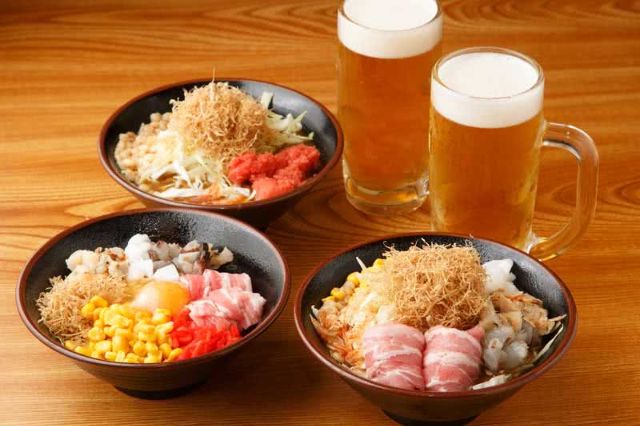

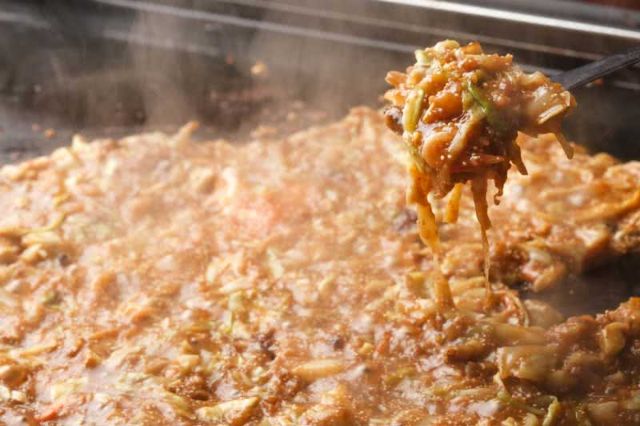
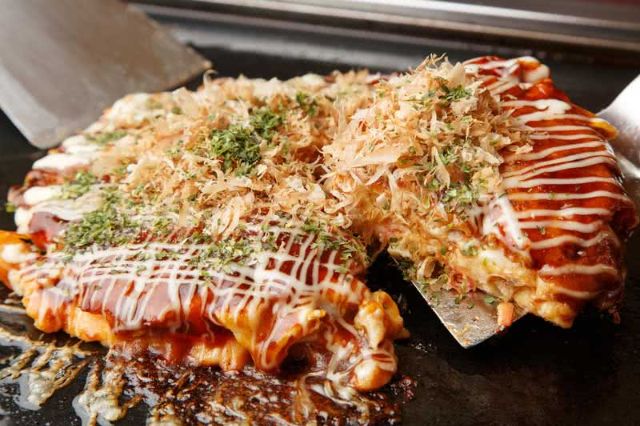
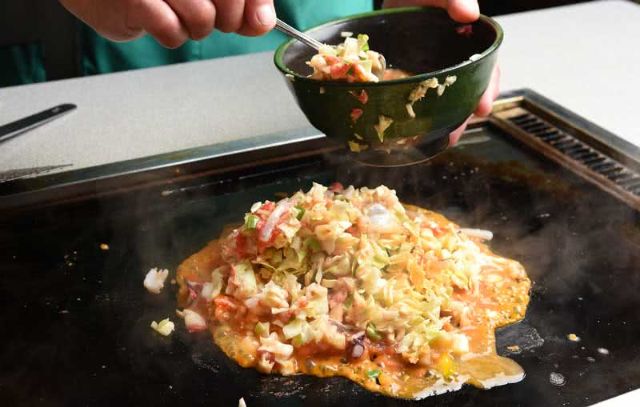
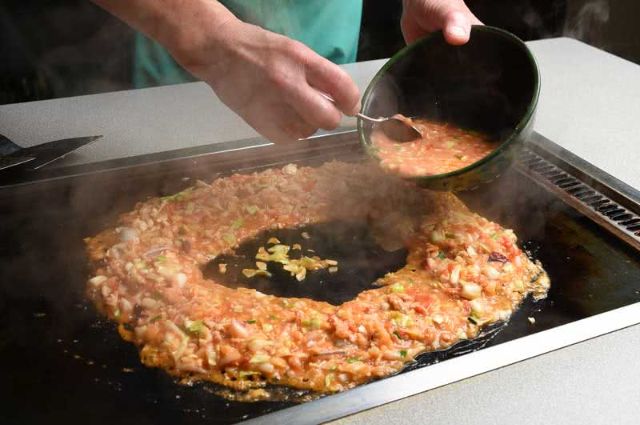
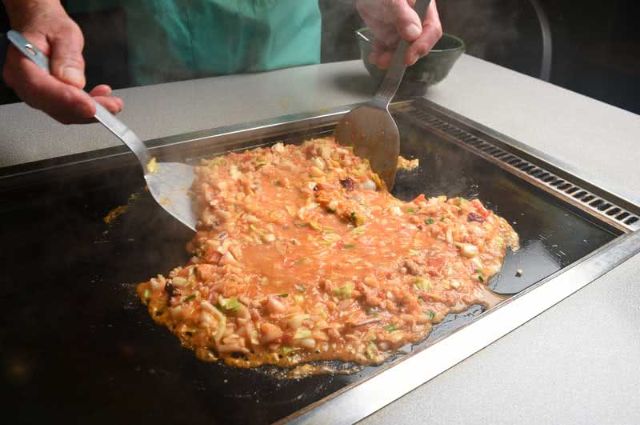











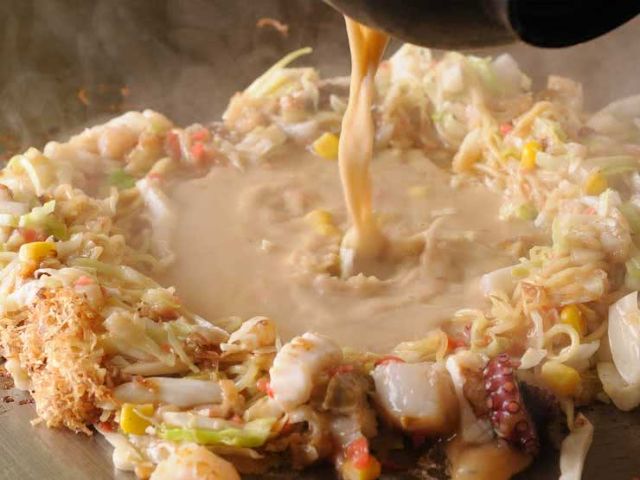




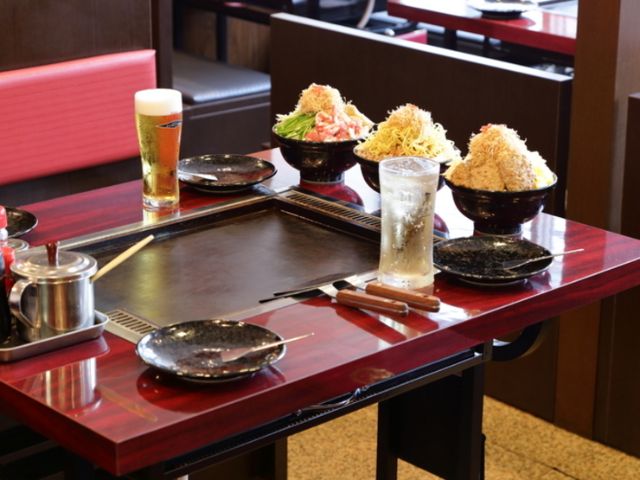
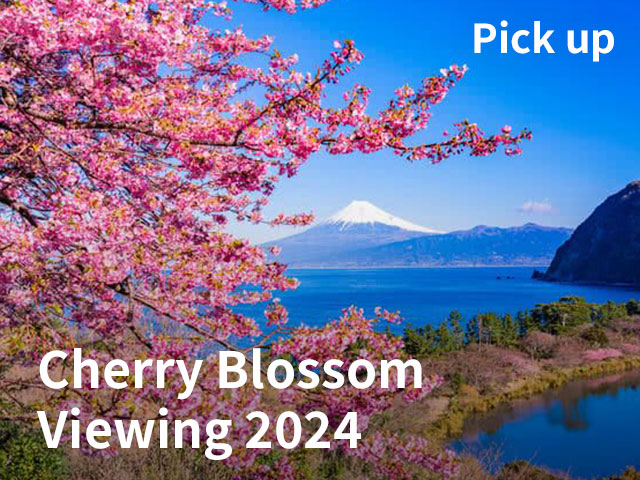




![[2023 Edition] What Is the Difference Between Kappo and Ryotei? A Look Into the Deep World of Japanese Cuisine](/gg/content_image/tn0013_001_150x105z.jpg)

